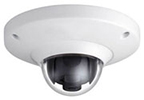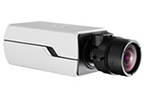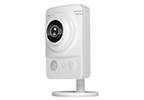Security cameras have become a common feature of modern security systems. However, technology continues to move forward and analog systems are becoming outdated. More and more facilities are moving away from analog to IP/Network Video Surveillance Systems. There are a number of reasons for this, ranging from budgetary to technological.
IP/Network Cameras
Features & Advantages

- Remote Surveillance
- With network / IP Cameras, users can access real-time video at any time from any authorized computer or mobile device anywhere. An IP camera can be simply wired in to the nearest network switch where it uses the existing network infrastructure to take the cameras signal back to the NVR. IP cameras can also be integrated with a wireless network allowing almost unlimited expansion.
- Two-way audio communication
- Compare to normal analog security camera, some IP camera can support two way audio communication. Two-way audio via a single network cable allows users to listen to and speak to the subject of the video.
- Superior Image Quality
- IP cameras are digital end to end, and use progressive scanning to make full use of camera images - providing up to 25% more resolution than analog cameras with similar images. IP is also available with Megapixel cameras, delivering super-high resolution images with 30 frames per second of real-time video. IP cameras are typically available at resolutions from 0.3 (VGA resolution) to 29 megapixels.
- Intelligence & Analytics
- Some IP cameras support Alarm input and output, motion detection, RS485 connection port. Analytics include facial recognition, loitering, line crossing, object taken and many more.
- Wireless Opportunities
- IP cameras can use the wi-fi to connect with Internet, it can be installed any area covered with wireless signal.
Types of IP Cameras

Speed Dome (PTZ) Camera

Fish Eye Camera

Box Camera

Bullet Camera

Dome Camera

Cube Camera


